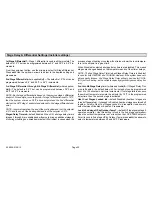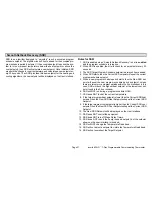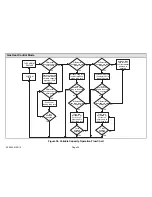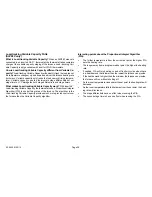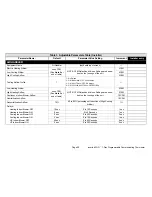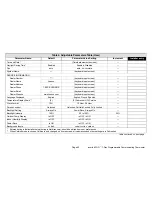
506920−01 09/12
Page 32
Heat Pump, Dual Fuel and Balance Points
IMPORTANT − The Balance Points feature requires that a sensed out-
door temperature is provided to the thermostat. This can be either a
connection to Wi−Fi (for local temperature information) or a connection
to an outdoor sensor (included in all communicating icomfort
t
−en-
abled heat pumps; optional outdoor temperature sensor X2658 for
non−communicating heat pumps).
Heat Pump Balance Points
The LOW and HIGH setpoints may be controlled by the icomfort
Wi-Fi
ther-
mostat using the LOW and HIGH Balance Points feature. To enable the Bal-
ance Points feature, go to the installer section equipment button. Scroll
down to the System" screen, select
edit
and scroll down to Balance Points
Controls. Use arrows to select
Enabled
and then press
save
. See the flow-
chart (Page 33) for a simplified explanation of how balance points control
system operation.
Low Balance Point
If the outside temperature is below the programmed low balance point (set
by default at 25°F), compressor operation is not allowed. Since the heat
pump is not as effective at a lower outdoor temperatures, it may be more
comfortable to use the auxiliary electric heat or the furnace (in dual fuel sys-
tems, it may be more economical) to satisfy a demand for heat. The low bal-
ance point options are from −20°F to the high balance point temperature. The
setpoint can be adjusted in 1.0°F steps.
High Balance Point
If the outside temperature is above the programmed high balance point (set
by default at 50°F), auxiliary electric heat operation or furnace operation (in
dual fuel system) is not allowed. This ensures that the lower cost heat pump
operation will satisfy the heating demand, rather that the more expensive
auxiliary electric heat. The high and low balance points will not lock out both
compressor heat and auxiliary heat/furnace at the same time.
Dual Fuel Applications (Communicating Systems Only)
Dual fuel applications, which include both a Heat Pump and a gas furnace,
will provide multiple stages of heating. For example, a two−stage heat pump
would deliver two stages of heat. The gas furnace can add two to four more
stages of heat. Figure 35 flow chart illustrates Dual Fuel operation with Bal-
ance Points.













